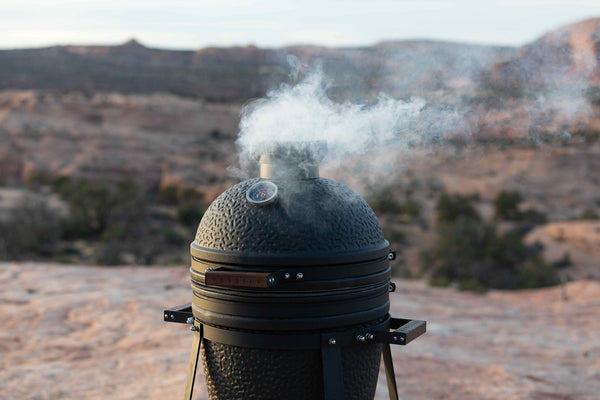
How to Control Temperature in a Kamado Grill | Vessils Airflow BBQ Guide
Why Temperature Control Matters in a Kamado Grill
For grilling enthusiasts, barbecuers, and smokers, precise temperature management is the secret to unlocking the full potential of a Kamado grill. Whether you’re aiming for low-and-slow BBQ, a perfectly roasted chicken, or a sizzling sear, knowing how to control temperature in a Kamado grill is essential for consistent, delicious results. With Vessils, you get the benefit of high-grade ceramic construction and intuitive vent systems, making temperature mastery both achievable and rewarding.
Understanding the Basics: The Fire Triangle and Airflow

At the heart of kamado temperature tips is the fire triangle: fuel, heat, and oxygen. Your Vessils Kamado uses charcoal for fuel, but it’s the airflow-controlled by the top and bottom vents-that determines how hot your grill gets. More oxygen means a hotter fire; less oxygen brings the temperature down.
-
Bottom Vent (Draft Door): Controls the amount of air entering the grill. Open wider for higher temps, close for lower temps.
-
Top Vent: Regulates how much hot air escapes, allowing for fine-tuning of your grill temperature.
Think of the bottom vent as your “coarse” adjustment and the top vent as your “fine” adjustment.
Step-by-Step: How to Control Kamado Grill Temp
1. Lighting the Grill

Begin by adding quality lump charcoal to your Vessils Kamado. Light it using a fire starter-avoid lighter fluid for best flavor and safety. Leave both vents fully open to maximize airflow and help the fire establish quickly.
2. Approaching Your Target Temperature
As the grill heats up, monitor the built-in thermometer. When you’re about 50°F below your desired cooking temperature, start adjusting the vents:
-
For Low-and-Slow (225–275°F):
-
Bottom vent: open about 1 inch or less
-
Top vent: mostly closed, with the wheel or daisy wheel slightly open
-
For Medium (325–450°F):
-
Bottom vent: half open
-
Top vent: partially open to increase the chimney effect
-
For High-Heat Searing (500°F+):
-
Both vents fully open until you reach your target, then gradually close to stabilize
Tip: It’s easier to raise the temperature than to lower it, so approach your target slowly and avoid overshooting.
3. Fine-Tuning and Maintaining Temperature
Once you’re within 25°F of your target, make small adjustments-primarily with the top vent-to stabilize the heat. Remember, even small vent changes can have a big impact due to the Kamado’s insulation and heat retention.
-
Leave the lid closed as much as possible. Opening the lid causes heat loss and temperature swings.
-
Weather, charcoal type, and grill load can all affect airflow and temperature, so adjust as needed.
Cooling Down and Safety Tips
When you’re finished cooking, close both the bottom and top vents completely. This will snuff out the coals and safely bring your grill temperature down over time. Always use heat-resistant gloves and tools when adjusting vents or handling hot surfaces.
For more on safe grilling practices, including food safety and thermometer use, the USDA’s grilling safety guide is an excellent resource.
Vessils Kamado Temperature Tips for Consistent Results
-
Record your vent settings for different temperature ranges-your Vessils Kamado will respond consistently to the same adjustments.
-
Don’t overfill with charcoal; too much can restrict airflow and make temperature control harder.
-
Practice makes perfect: Each cook will help you refine your approach and get to know your grill’s unique quirks.
For a deeper dive into Kamado grilling, check out our Beginner’s Guide to Char-Grilling and explore the Vessils Kamado Grills Collection for more tips, recipes, and accessories.
Ready to Master Airflow? Control Kamado Grill Temp with Vessils
Learning how to control temperature in a Kamado grill unlocks a world of culinary possibilities. With Vessils, you have the tools and design to nail every cook-from slow-smoked brisket to crispy pizza. Ready to take your grilling to the next level? Explore our Vessils Kamado Grills Collection and discover more airflow BBQ guides and kamado temperature tips on our blog.
